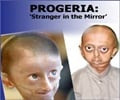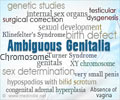A link between the birth defect gastroschisis and the agricultural chemical atrazine has been found in a study to be presented today at the Society for Maternal-Fetal Medicine's (SMFM) annual meeting, The Pregnancy Meeting ™, in Chicago.
Gastroschisis is a type of inherited congenital abdominal wall defect in which the intestines, and sometimes other organs, develop outside the fetal abdomen through an opening in the abdominal wall. The incidence of gastroschisis is on the rise, increasing two to four times in the last 30 years.Researchers at the University of Washington (Seattle), were alerted to a higher than normal number of cases in Eastern Washington which caused them to hypothesize that the increased incidence could be due to environmental exposures in that area.
"Our state has about two times the national average number of cases of gastroschisis," said Dr. Sarah Waller, one of the study's authors. "The life expectancy for fetuses with this diagnosis is better than 90 percent; however it requires delivery at a tertiary care center with immediate neonatal intervention which often separates families and can cause serious financial and emotional stress."
The team conducted a study of all cases of live born infants with gastroschisis during the period of 1987-2006. They matched birth certificates with U.S. Geological Survey databases of agricultural spraying. They looked at the chemicals atrazine, nitrates, and 2,4-dichlorophenoxyacetic acid.
Of the 805 cases and 3616 controls in the study, gastroschisis occurred more frequently among infants whose mothers resided less than 25 km from the site of high surface water contamination with atrazine. No risk was associated with the other chemicals reviewed in the study. The risk of gastroschisis also increased for women who conceived in the spring (March through May), when chemical use is more prevalent.
Advertisement
RAS














